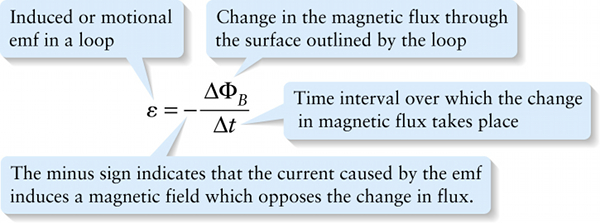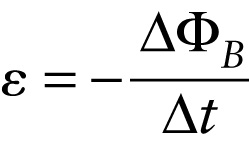Faraday’s law and Lenz’s law for induction (20-3)
Question 1 of 4
Question
Induced or motional emf in a loop
{"title":"Induced or motional emf in a loop","description":"Correct!","type":"correct","color":"#99CCFF","code":"[{\"shape\":\"poly\",\"coords\":\"82,133\"},{\"shape\":\"rect\",\"coords\":\"10,16,12,16\"},{\"shape\":\"poly\",\"coords\":\"144,22\"},{\"shape\":\"rect\",\"coords\":\"2,66,27,100\"}]"} {"title":"Change in the magnetic flux through the surface outlined by the loop","description":"Wrong","type":"incorrect","color":"#ffcc00","code":"[{\"shape\":\"rect\",\"coords\":\"176,9,219,55\"}]"} {"title":"Time interval over which the change in magnetic flux takes place","description":"Incorrect","type":"incorrect","color":"#333300","code":"[{\"shape\":\"rect\",\"coords\":\"195,97,222,135\"}]"} {"title":"The minus sign indicates that the current caused by the emf induces a magnetic field which opposes the change in flux.","description":"Incorrect","type":"incorrect","color":"#000080","code":"[{\"shape\":\"rect\",\"coords\":\"88,69,127,90\"}]"}Review
The nineteenth-century Russian physicist Heinrich Lenz summarized these observations in a principle that we now call Lenz’s law:
The direction of the magnetic field induced within a conducting loop opposes the change in magnetic flux that created it.
It’s common to combine Faraday’s law and Lenz’s law into a single equation:

